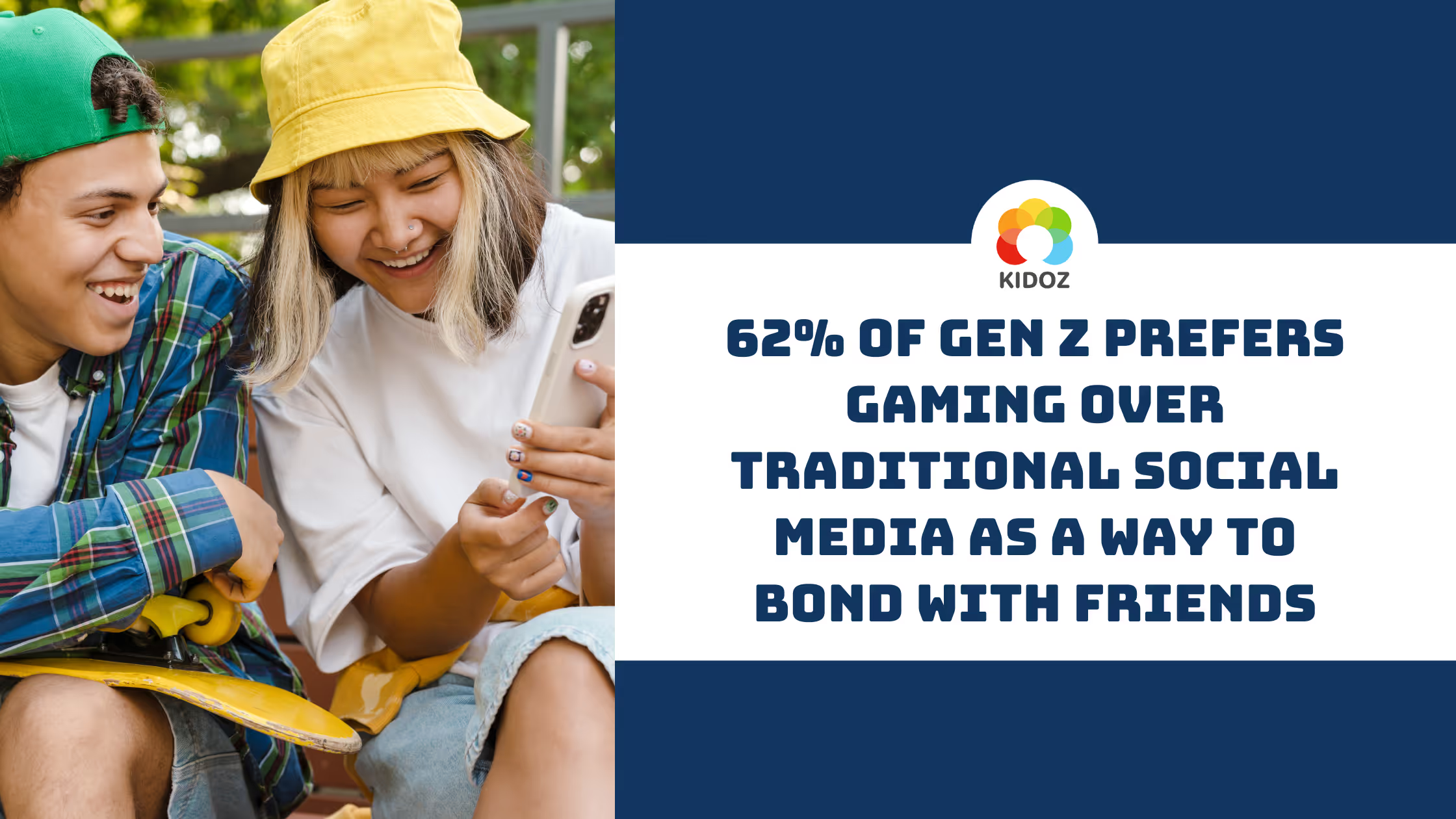
For younger generations like Gen Z and Gen Alpha, gaming is not just entertainment: t’s their primary social hub. These digital-native audiences have grown up with seamless connectivity, where games like Minecraft and Among Us serve as their playgrounds, classrooms, and gathering spaces. Once viewed as an isolating pastime, gaming has evolved into a dynamic social platform that fosters global communities. It has become a natural extension of their social lives, offering spaces for creativity, collaboration, and connection.
Key Stats Highlighting Social Trends & Youth Engagement in Gaming
- Gen Z's Preference for Gaming: A recent Statista study shows that 87% of Gen Z gamers play games to stay connected with friends and 62% of Gen Z prefers gaming to traditional social media as a way to bond.
- Gen Alpha’s Immersion: 87% play video games regularly and 33% play video games more than 3 hours a day; 45% say they are connected almost constantly (source: Newzoo.,com).
- Social Interactions Through Gaming: 70% of Gen Z and Gen Alpha gamers prefer games with built-in social features, such as multiplayer modes, chat, and friend lists.
Why Gaming Resonates with Youth Audiences
1) Safe Social Environments: Games provide structured, moderated spaces where younger players can engage with peers safely.
2) Creative Expression: World building games allow users to build communities, design avatars, and create unique experiences, blending play with identity exploration.
3) Global Connectivity: Games break down geographical barriers, enabling kids and teens to form friendships and connections worldwide.
4) Learning and Collaboration: Multiplayer games teach valuable skills such as teamwork, problem-solving, and leadership, often disguised as fun challenges.
How Brands Can Connect with Gen Z and Gen Alpha
To resonate with these audiences, brands must approach gaming authentically and creatively. Here are some ways to do it right:
1) Be Where They Play: Partner with a network like Kidoz, to create branded in-game experiences that align with the youth audience's interests.
2) Focus on Inclusivity: Design campaigns that are accessible, diverse, and reflective of the global nature of these gaming communities.
3) Respect Their Space: Avoid overly commercialized tactics; instead, add value to the gaming experience by aligning with the community’s culture and norms. Look at play patterns and use contextual targeting to reach relevant audiences.
Gaming as the Future Social Platform for Youth
For Gen Z and Gen Alpha, gaming isn’t just a pastime: it’s a lifestyle and a space to forge lasting connections. As gaming continues to evolve as a primary social platform for younger audiences, brands that engage thoughtfully and authentically have a unique opportunity to build loyalty and trust with these emerging generations.
The takeaway? Gaming is the new social. And for Gen Z and Gen Alpha, it’s already their home.
Is your brand ready to connect? Let's work together.


